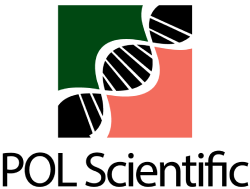A simple, effective and inexpensive method to highlight antigen-antibody reaction based on liquid-semisolid phase

Identification of the immunological antigen-antibody reaction performed either in liquid phase or in agarose have several limits: antigen excess, low sensitivity, low speed reaction. A new method is described for the antigen-antibody reaction, easy, simple to perform and inexpensive. It is based on a reaction where the specific antibody is mixed with a semi-solid gel on a transparent surface and the antigen to be identified is inoculated into the gel. In this method, an immune precipitate can be shown in just few minutes, obtaining a good sensitivity compared with manual methods such as the Ouchterlony technique and other similar methods. By using albumin, IgG, RBP, transferrin, alpha-2-macroglobulin as antigen, the immune precipitate is formed within 10 min at 2–8 microgram/ml and, after 30 min, at 1–4 microgram/ml may be detected. The display of the immune precipitate is favored by oblique observation on a black background with a perpendicular light illuminating the gel from the bottom upwards. This method also allows a good control of antigen excess, a problem that is instead found in immunoturbidimetric reactions. The method here described has also been tested in serum and urine, and then it can be advantageously used as qualitative or semi-quantitative immunological test in research or diagnostic. Moreover, it could be particularly useful in low resources geographical areas, where an immunoassay that requires the use of dedicated equipment is not economically sustainable. The authors have waived the patent rights to allow the free development of new tests based on this method.
1. Park BH, Good RA (1977) Principi di Immunobiologia Moderna generale e Clinica. Padova: Piccin Editore. Ed. Italiana a cura di Mazzei D. pp. 120-124.
2. Cavallo G (1984) Elementi di immunologia. Torino: Edizioni Libreria Cortina. pp. 229-231.
3. Whicher JT, Price CP, Spencer K (1983) Immunonephelometric and immunoturbidimetric assays for proteins. Crit Rev Clin Lab Sci 18(3) : 213-260.
4. Denham E, Mohn B, Tucker L, Lun A, Cleave P, Boswell DR (2007) Evaluation of immunoturbidimetric specific protein methods using the Architect ci8200: comparison with immunonephelometry. Ann Clin Biochem 44(6) : 529-536.
5. Mali B, Armbruster D, Serediak E, Ottenbreit T (2009) Comparison of immunoturbidimetric and immunonephelometric assays for specific proteins. Clin Biochem 42(15) : 1568-1571
6. Ouchterlony O (1948) In vitro method for testing the toxin-producing capacity of diphteria bacteria. Acta Path. Microbiol. Scand. 25 : 186-191.
7. Mancini G, Carbonara AO, Heremans JF (1965) Immunochemical quantitation of antigens by single radial immunodiffusion. Immunochemistry 2 : 235-254.
8. Ciaiolo C. Gel semisolido reattivo e relativa area di reazione, per reazioni biologiche e chimiche. 2007 Italian Application Patent TO2007A000106. 2010 Italian Patent 0001379438.
9. Ciaiolo C. Method for performing immunologic assays and product thereof. 2008 Domanda di Brevetto Internazionale numero PCT/IB2008/000381.
10. Becker W. (1969) Determination of antisera titres using the single radial immunodiffusion method. Immunochem 1: 539-546.
11. Wadsworth C (1963) Comparative testing of a new photographic material for rapid registration of immunoprecipitates. Int. Archs. Allergy Appl. Immunol. 23 : 103-114.
12. Widal F (1896) Sero-diagnosis of typhoid fever. Bull Mem Soc Med Hop Paris. 13 : 561-566
13. Gaultney JB, Wende RD, Williams RP (1971) Microagglutination procedures for febrile agglutination tests. Applied microbiology 11; 22(4) : 635-640.

